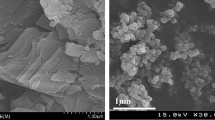Abstract
Purpose. The mucoadhesiveness of polymer-coated liposomes was evaluated to develop a novel drug carrier system for oral administration of poorly absorbed drugs such as peptide drugs.
Methods. Multilamellar liposomes consisting of dipalmitoylphosphatidylcholine (DPPC) and dicetyl phosphate (DCP) (DPPC:DCP = 8:2 in molar ratio) were coated with chitosan (CS), polyvinyl alcohol having a long alkyl chain (PVA-R) and poly (acrylic acid) bearing a cholesteryl group. The adhesiveness of the resultant polymer-coated liposomes to the rat intestine was measured in vitro by a particle counting method with a Coulter counter. The CS-coated liposomes containing insulin were administered to normal rats and the blood glucose level was monitored.
Results. The existence of polymer layers on the surface of liposomes was confirmed by measuring the zeta potential of liposomes. The CS-coated liposomes showed the highest mucoadhesiveness and the degree of adhesion was dependent on the amount of CS on the surface of the liposomes. The blood glucose level of rats was found to be significantly decreased after administration of the CS-coated liposomes containing insulin. The lowered glucose level was maintained for more than 12h after administration of the liposomal insulin, which suggested mucoadhesion of the CS-coated liposomes in the intestinal tract of the rats.
Similar content being viewed by others
REFERENCES
H. Patel and B. E. Ryman. Systemic and oral administration of liposomes. In C. G. Knight (ed.), Liposomes: from physical structure to therapeutic applications, Elsevier, Amsterdam, 1981, pp. 409–441.
P. K. Guputa, S-H. S. Leung, and J. R. Robinson. Bioadhesives/mucoadhesives in drug delivery to the gastrointestinal tract. In V. Lenaerts and R. Gumy (ads.), Bioadhesive Drug Delivery Systems, CRC Press, Florida, 1990, pp. 65–92.
M. Ishida, N. Nambu, and T. Nagai. Mucosal dosage form of lidocaine for toothache using hydroxypropyl cellulose and carbopol. Chem. Pharm. Bull. 30:980–984 (1982).
K. Satoh, K. Takayama, Y. Machida, Y. Suzuki, M. Nakagaki, and T. Nagai. Factors affecting the bioadhesive property of tablets consisting of hydroxypropyl cellulose and carboxyvinyl polymer. Chem. Pharm. Bull. 37:1366–1368 (1989).
W.-G. Chen and G. C.-C. Hwang. Adhesive and in vitro release characteristics of propranolol bioadhesive disc system. Int. J. Pharm. 82:61–66 (1992).
N. A. Peppas and A. G. Mikos. Experimental methods for determination of bioadhesive bond strength of polymers with mucus. S. T. P. Pharma 5:187–191 (1989).
J. D. Smart. An in vitro assessment of some mucosa-adhesive dosage forms. Int. J. Pharm. 73:69–74 (1991).
C.-M. Lehr, J. A. Bouwstra, J. J. Tukker, and H. E. Junginger. Intestinal transit of bioadhesive microspheres in an in situ loop in the rat—A comparative study with copolymers and blends based on poly acrylic (acid). J. Control. Release 13:51–62 (1990).
C-M. Lehr, J. A. Bouwstra, W. Kok, A. G. De Boer, J. J. Tukker, J. C. Verhoef, D. D. Breimer and H. E. Junginger. Effects of the mucoadhesive polymer polycarbophil on the intestinal absorption of a peptide drug in the rat. J. Pharm. Pharmacol. 44:402–407 (1992).
C. Pimienta, F. Chouinard, A. Labib, and V. Lenaerts. Effect of various poloxamer coatings on in vitro adhesion of isohexylcyanoacrylate nanospheres to rat ileal segments under liquid flow. Int. J. Pharm. 80:1–8 (1992).
C.-M. Lehr, J. A. Bouwstra, E. H. Schacht, and H. E. Junginger. In vitro evaluation of mucoadhesive properties of chitosan and some other natural polymers. Int. J. Pharm. 78:43–48 (1992).
S. C. Arnold, M. S. Ferritto, R. W. Lenz, and D. A. Tirrell. pH dependent modification of phospholipid vesicle membranes by poly(carboxylic acid)s bearing pendant cholesteryl esters. Polymer Reprint,27:42–43 (1986).
C. Dong and J. A. Rogers. Polymer-coated liposomes: stability and release of ASA from carboxymethyl chitin-coated liposomes. J. Control. Release 17:217–224 (1991).
T. P. Assadullahi, K. Hamid, and R. C. Hider. In vitro stability of liposomes in the presence of polymers, trehalose and sodium taurocholate. J. Microencapsul. 9:317–327 (1992).
G. M. Shenfield and J. C. Hill. Infrequent response by diabetic rats to insulin-liposomes. Clinical and Exp. Pharm. & Physiol. 9:355–361 (1982).
Author information
Authors and Affiliations
Rights and permissions
About this article
Cite this article
Takeuchi, H., Yamamoto, H., Niwa, T. et al. Enteral Absorption of Insulin in Rats from Mucoadhesive Chitosan-Coated Liposomes. Pharm Res 13, 896–901 (1996). https://doi.org/10.1023/A:1016009313548
Issue Date:
DOI: https://doi.org/10.1023/A:1016009313548




